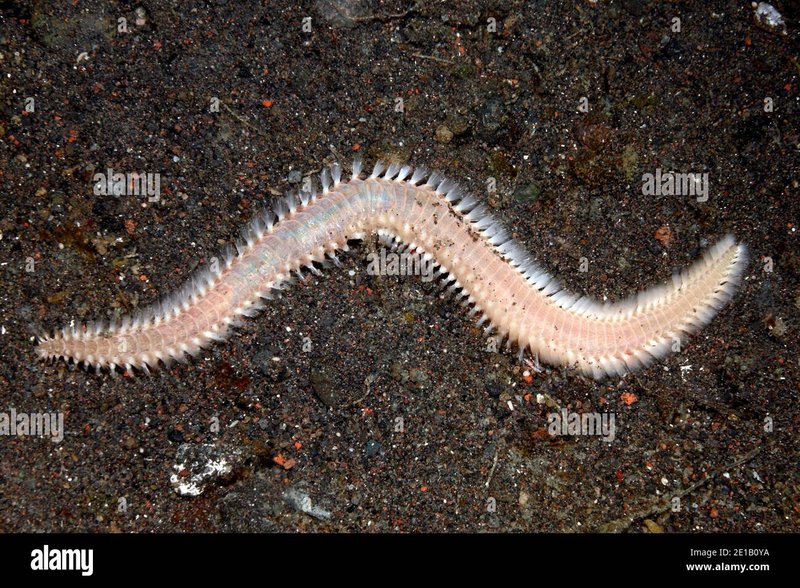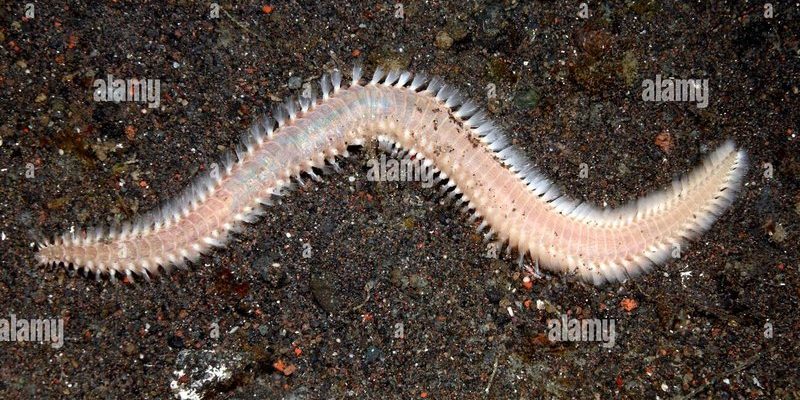
Let’s dive into the world of bristle worms, focusing on their maximum size, growth patterns, and what you need to know to keep your aquarium healthy. Imagine you’re having coffee with a friend who’s curious about the marine life in their tank. That’s the vibe we aim for here—conversational, informative, and fun!
What Are Bristle Worms?
Bristle worms are part of the polychaete family, which is a group of segmented worms found in various marine environments. They come in many shapes and sizes, ranging from a few millimeters to over a meter long in the wild. However, when kept in aquariums, their size is usually much smaller due to the limited space and resources.
These worms are scavengers, meaning they play a crucial role in cleaning up detritus and dead organic matter in your tank. You might see them wriggling around as they search for food. Honestly, they might not look cute, but they’re essential to a balanced aquarium. They help break down waste and feed on uneaten food, contributing to the overall health of the system.
Bristle worms can be mistaken for *hair worms* or *fire worms*, but the key difference lies in their bristles. Bristle worms have tiny, hair-like structures along their bodies, which can sometimes sting if touched. So, while they are helpful, it’s best to observe them from a distance!
How Big Can Bristle Worms Get in Home Setups?
In home setups, bristle worms typically reach sizes of about 4 to 10 inches, with some species able to grow slightly larger. The maximum size often depends on the species and the environment you provide. If your tank is spacious and well-maintained, your bristle worms may thrive and grow to their full potential.
For example, the *Eunice aphroditois*, also known as the fish-eating bristle worm, can grow up to 3 feet in the wild, but in a typical aquarium, they rarely exceed 12 inches. Keep in mind that it’s not just about the length; their girth can add to their overall size as well.
In many cases, you might not even realize how big they can get until you spot one lurking under a rock or in the substrate. Here’s the thing: if you maintain appropriate tank conditions and provide enough food, these worms can reach their maximum size comfortably.
Factors Influencing Bristle Worm Growth
Several factors determine how large bristle worms can grow in your aquarium. Here’s a deeper look:
- Tank Size: A larger tank usually provides more space and resources, allowing worms to grow bigger.
- Food Supply: Bristle worms thrive on organic waste and uneaten food. A plentiful food supply can lead to larger sizes.
- Water Quality: Good water parameters, like temperature and salinity, promote healthy growth. Regular water changes can help maintain this quality.
- Species Type: Different species have different growth potentials. It’s worth researching the specific types of bristle worms in your tank.
You might be wondering how to keep your bristle worm population in check. While these worms are beneficial, overpopulation can lead to problems. Ensuring balanced water conditions and not overfeeding your fish can help control their growth.
Common Misconceptions About Bristle Worms
Bristle worms often get a bad rap. Many aquarium enthusiasts hear horror stories about these creatures but don’t know the full picture. Let’s clear up some common misconceptions:
- Myth 1: All bristle worms are harmful.
- Myth 2: They’ll overrun your tank.
- Myth 3: Bristle worms are an indication of poor tank health.
In reality, bristle worms are mostly *harmless* and serve a purpose in your tank. They help break down waste and contribute to a balanced ecosystem. Yes, their population can explode, but that’s usually a sign of overfeeding or inadequate maintenance rather than a problem with the worms themselves.
Let me explain further: if you notice a sudden increase in their numbers, it’s worth checking your feeding habits and overall tank care. If you’re diligent about maintaining your aquarium, bristle worms can actually be quite beneficial.
Can You Control Bristle Worm Size?
Yes, you can control how big bristle worms get in your home setup. Here are some helpful tips to keep their size manageable:
- Regular Maintenance: Performing regular water changes and cleaning the tank helps maintain good water quality.
- Monitor Feeding: Make sure not to overfeed your fish, as excess food contributes to bristle worm growth.
- Choose the Right Tank Mates: Certain fish, like wrasses or some triggerfish, naturally control bristle worm populations by eating them.
By taking these steps, you can ensure that your bristle worms stay at healthy sizes without becoming overwhelming.
Understanding bristle worms is crucial for any aquarium owner. Depending on the species and environment, they can reach sizes of about 4 to 10 inches, with some exceptions. With proper maintenance and a balanced food supply, these little creatures contribute positively to the aquatic ecosystem.
Instead of fearing these worms, embrace their role in keeping your tank healthy. Just like every part of an ecosystem, they have a purpose. By learning about their needs and growth patterns, you can create a thriving home for them and all your other aquatic life. Happy fishkeeping!

